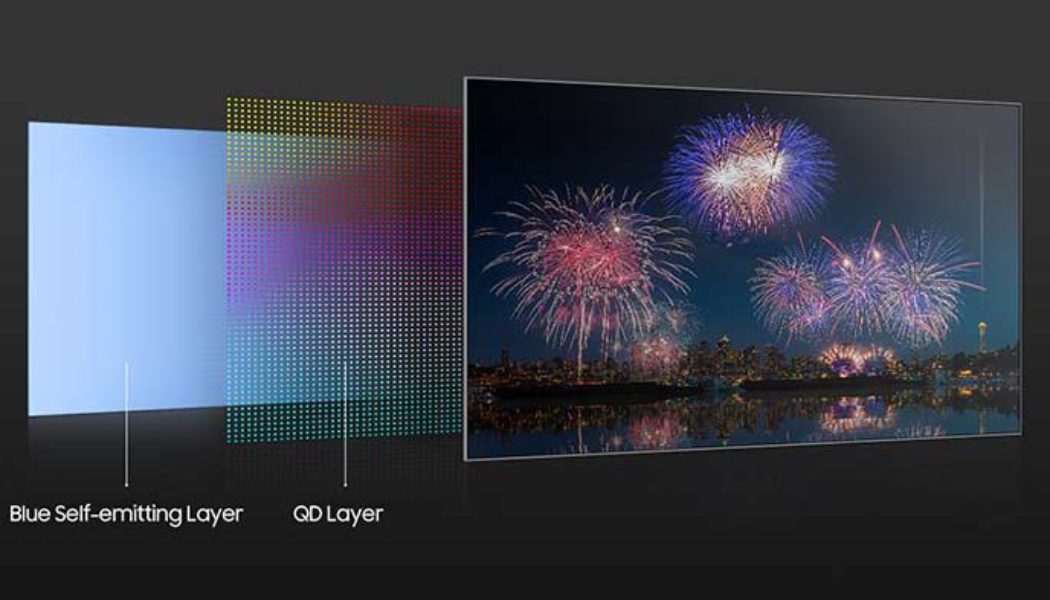
Key specs for Samsung Display’s new QD-OLED TVs have been revealed by third-party certification company SGS, the South Korean display manufacturer has announced. According to SGS the new panels are capable of hitting a brightness of 1,000 nits, and can display over 90 percent of the BT.2020 color space, which both represent substantial improvements over current OLED TVs on the market, otherwise known as WOLEDs.
The figures are in line with those that were put out by YouTube channel LinusTechTips (LTT) last week, in a video that was sponsored by Samsung Display. So it’s notable that these relatively impressive specs have now been validated by an independent certification company, albeit only partially.
LinusTechTip’s video compares the QD-OLED’s specs with LG’s G1 OLED, which was its flagship from last year and has an OLED Evo panel. According to LTT, Samsung Display’s QD-OLED hit almost 200 nits in fullscreen brightness, rising to 1000 nits over a 10 percent patch, and 1500 nits over a 3 percent portion of the screen (in general, the less of an OLEDs screen it has to illuminate, the brighter it can get). In contrast, Rtings review of the LG G1 has it hitting a maximum peak of 167 nits in fullscreen brightness, 827 nits on a 10 percent window, and 846 on a 2 percent window.
The new QD-OLED panels also reportedly have an impressively wide color gamut compared to the G1. While Samsung’s new panel can reportedly display over 90 percent of the BT.2020 color space, and 120 percent of the DCI-P3 color space according to SGS, Rtings reports the G1 can only display around three quarters of the BT.2020 space, and around 100 percent of DCI-P3.
[embedded content]
Importantly, Samsung Display’s new panel appears to achieve this without sacrificing the existing benefits of OLED displays. These include pure blacks where no light is being emitted at all, not to mention excellent viewing angles compared to typical LCD TVs. In fact, SGS says the viewing angles of Samsung Display’s QD-OLEDs are even better than existing OLEDs, maintaining 80 percent of luminance when viewed from a 60-degree angle compared to 53 percent for a conventional OLED.
An important caveat is that all of these comparisons were made with LG’s 2021 flagship, which is due to be superseded this year when it releases a new lineup of OLED TVs. LG Display also has a new generation of OLED panels of its own, dubbed OLED EX, which it says offer increased brightness levels of up to 30 percent. Whether that’s enough to remain competitive with Samsung’s new panels remains to be seen.
We’ll still have to wait for consumer TVs to actually make it to market using both panels before we can be completely sure of these readings, but it’s looking like an impressive set of results for Samsung Display’s latest technology. And Samsung’s display arm produces panels for a variety of companies, so it won’t just be Samsung’s own TVs that benefit.
The question still remains when, exactly, Samsung Display’s new panels will actually go on sale. Interestingly the first QD-OLED TV to be announced wasn’t from Samsung Electronics, but was instead from Sony which said its Bravia XR A95K will use a QD-OLED panel from Samsung Display. Alienware also has a QD-OLED computer monitor in the works. When Samsung Electronics will eventually release a QD-OLED TV of its own is anyone’s guess.









